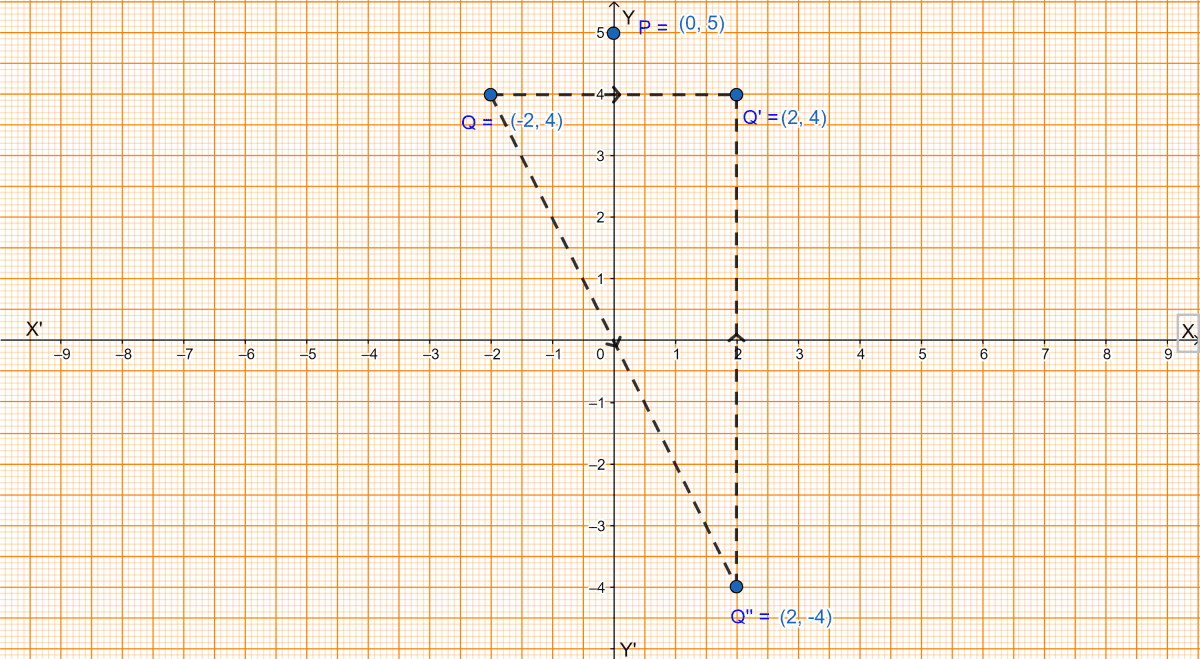Mathematics
Use a graph paper for this question. (Take 10 small divisions = 1 unit on both axes). P and Q have coordinates (0, 5) and (-2, 4).
(i) P is invariant when reflected in an axis. Name the axis.
(ii) Find the image of Q on reflection in the axis found in (i).
(iii) (0, k) on reflection in the origin is invariant. Write the value of k.
(iv) Write the coordinates of the image of Q, obtained by reflecting it in the origin followed by reflection in x-axis.
Answer
The graph for the question is shown below:

(i) The point P(0, 5) is invariant in y-axis.
(ii) From graph we get,
The image of Q(-2, 4) on reflection in y-axis is Q'(2, 4).
(iii) Given, (0, k) on reflection in the origin is invariant.
From graph we get, (0, 0) on reflection in the origin is invariant. Comparing (0, k) with (0, 0) we get k = 0.
Hence, the value of k = 0.
(iv) From graph we get,
The coordinates of image of Q after reflection in origin and then in x-axis is (2, 4).
Related Questions
The points A(2, 3), B(4, 5) and C(7, 2) are the vertices of △ABC.
(i) Write down the coordinates of A1, B1, C1 if △A1B1C1 is the image of △ABC when reflected in the origin.
(ii) Write down the coordinates of A2, B2, C2 if △A2B2C2 is the image of △ABC when reflected in the x-axis.
(iii) Assign the special name to quadrilateral BCC2B2 and find its area.
The point P(3, 4) is reflected to P' in the x-axis and O' is the image of O(origin) in the line PP'. Find :
(i) the coordinates of P' and O'.
(ii) the length of segments PP' and OO'.
(iii) the perimeter of the quadrilateral POP'O'.
(iv) the geometrical name of the figure POP'O'.
The reflection of the point P(-2, 3) in the x-axis is
(2, 3)
(2, -3)
(-2, -3)
(-2, 0)
The reflection of the point P(-2, 3) in the y-axis is
(2, 3)
(2, -3)
(-2, -3)
(0, 3)